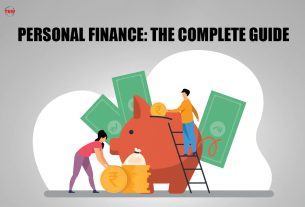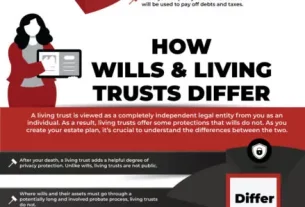After writing about building passive income since 2009, people still seem to be confused about the difference between active income and passive income!
Let me finally put this confusion to rest because I don’t want people to get tricked into thinking earning passive income is easy. It is not!
It took me from 1999 – 2012 to earn enough passive income to leave my investment banking job behind. Then it took another five years to earn enough passive income to support a family of up to four in expensive San Francisco.
Yet, despite earning enough passive income in 2017 to stay unemployed, I’m still generating active income to generate more passive income.
Why? About 60% of the reason is due to keeping up with inflation. Housing, healthcare, and tuition costs are rising even faster than headline inflation. When you have children, these costs are the most impactful.
The other 40% for generative active income is due to a combination of habit, greed, purpose, fun, and the nice feeling of financial security.
The Definition Of Active Income
Active income is defined as any income generated that requires your consistent time and energy. Active income refers to income received for performing a service. You can’t have permanent active income without putting in time and energy.
Yes, you can temporarily earn active income without inputting any time and energy. Examples include earning a salary while being out sick for two weeks or going on a paid sabbatical for a month.
However, in the long run, generating permanent active income requires permanent time and energy. Given nobody has everlasting energy, a rational person will seek to build enough passive income before their energy runs out.
Most Common Active Income Examples
- Salary and bonus
- Stock options and restricted stock units
- Consulting / Freelancing
- Tips and commission
The only way to earn the above active income examples is to put in consistent time and energy.
Example Of Active Income Confused As Passive Income
People ask me why I don’t include blog income as part of my passive income investments. After all, Financial Samurai generates passive income whether I write a new post or not.
The simply answer is because writing these posts takes time and energy! These posts don’t write themselves with AI technology. I take around two hours to write a post. Then it takes between 30 minutes to one hour to edit the post. Finally, I spend ten minutes sharing my posts on various social media channels.
While I’m not writing, editing, and sharing my posts, I’m spending time updating my archive of ~2,500 posts. There is often new pertinent information every year or two, such as the latest 401(k) employee contribution limit or the latest median income in America.
When I’m not updating old posts, I’m responding to e-mails from readers, journalists, and business development employees. I could also send outreach e-mails to help spread Financial Samurai’s message. However, I’m too lazy to do so.
All of these activities take a total of 15-20 hours a week of my time and energy. There is no way income from blogging and podcasting are considered passive income. If it was, more people would be creatives because creating is way more fun than most day jobs.
The Definition Of Passive Income
Passive income is defined as any income generated that requires none of your time and energy. You earn income while you’re sleeping, playing, or meditating in the hot tub.
Further, there are only two ways to possibly generate more passive income. The first way is if you invest more in the asset class. The second way is if the asset class increases its returns on its own. You have little-to-no ability to improve your investment’s operations to generate more passive income.
Finally, you can’t generate passive income without first generating active income. Your capital has to first come from active income savings to then reinvest in passive income generating assets.
Most Common Passive Income Examples
- Stock dividends
- Bond coupon payments
- Certificates of Deposits
- Savings at a bank
- Private real estate investments
- Venture capital returns
- Venture debt returns
- Social Security
- Lending money
- Royalties from books, music, and art
- Licensing agreements
- Lifetime pension
No time and energy is required to generate the above passive income examples. However, time should be spent staying on top of your passive income investments. You want to have a proper asset allocation based on your risk tolerance and financial objectives.
Example Of Passive Income Confused As Active Income
The debate between what is considered active income and passive income occurs when a small amount of time and energy is required to earn the income.
I consider my ebook sales of How To Engineer Your Layoff as passive income. Since publishing the book in 2012, I’ve earned over $500,000 in net profits. However, I do spend several hours updating the book every two years to ensure it remains fresh with the latest information and severance negotiation strategies.
The reason why I consider my ebook passive income is because it gives me ZERO stress to maintain. In fact, it brings me small amounts of joy every time my phone notifies me of a sale.
The reality is, hardly anybody gives me grief about classifying my ebook sales as passive income. Instead, everybody wonders why more active income sources aren’t classified as passive income.
The Definition Of Semi-Passive Income = Semi-Active Income
Semi-passive and semi-active income are the same thing. I’ll go with semi-passive income because it sounds sexier.
Semi-passive income is defined as any income generated that requires some of your time and energy, but not an amount of time and energy equivalent to what is required to generate active income.
To be more specific, I define semi-passive income as requiring no more than 10% of the hours required to generate the same amount from working (active income).
For example, if it takes 40 hours a week to generate $1,000 a week in active income, it should only take at most four hours a week to generate $1,000 a week in semi-passive income. Most of the time, the time required will be less.
Semi-passive income could actually be the greatest type of income of all, depending on the investment. With semi-passive income, you can take action to increase your income. You might also really enjoy spending time on your semi-passive income sources.
Most Common Semi-Passive Income Examples
- Rent from rental properties
- eBooks (can be considered passive if you never update)
- Online courses (can be considered passive if you never update)
- Old posts
- Old videos
- Drop shipping (often takes way more than 10% of work time)
Example Of Semi-Passive Income Confused As Passive Income
Earning rent from rental properties is the most common example of semi-passive income people confuse as passive income. Being a landlord is anything but passive. There are always random maintenance and tenant issues that pop up. Even if you hire a property manager, you must manage the manager.
It is mainly due to these random reoccurring issues that I’ve shifted most of my real estate capital towards private real estate investing. I want the stability and income generation of real estate and none of the hassles.
As I’ve grown older and wealthier, my tolerance for dealing with rental property issues has declined. Thankfully, most landlords spend way less than 10% of what’s required at a day job to earn similar money. It’s just that when problems arise, they can be very stressful.
The semi-passive income I earn from rental properties is worthwhile because I’ve found my happy limit of owning four rentals. Anymore and the marginal benefit of owning rental property declines below the marginal cost.
Why You Might Be Confusing Active Income With Passive Income
The main reason why people get confused about the difference between active income and passive income is due to crafty marketing.
Somebody out there probably has an online course to sell you about how to make more passive income without having to do any work. If so, they are selling you a pipe dream. It’s hard to not be curious if they post their eye-popping revenue or profit figures.
As a consumer, you must differentiate between how the person got rich. Did they get rich by doing the thing they are trying to teach you to do or from the sales of the product that teaches you how they supposedly got rich?
For example, did the individual get rich from their investments? Or did the individual get rich by selling you a course on how to get rich through investments?
You should always wonder: If someone can get so rich from their investments, why bother selling courses? Just keep getting richer by investing!
There is nothing wrong with either way to earn so long as you, the consumer, are aware.
Here is a great example of a marketer advertising a passive income investment. It hooks you in and then says you can do the same if you buy their e-course for $999. It’s still the Wild Wild West on the internet.

You Want Both Active Income And Passive Income
I’ve been earning both active income and passive income since 1999. Contrary to popular opinion, the ideal total income composition is not 100% passive income.
If 100% of your income comes from passive income, you will likely feel lost. It means you are not doing something you love, what you’re good at, and what the world needs. In other words, you have not found your ikigai.

Without ikigai, your life feels less meaningful. Without meaning, it’s easy to fall into a pit of despair. A 100% passive income composition is a dangerous situation to be in! You want to feel the constant reward of active income because you want to feel recognized for your efforts.
The reason why I continued to write on Financial Samurai long after fake retirement is because it gave me a reason for being. I was helping others with their financial problems and giving them the courage to make better decisions.
Once my son was born in 2017, I received a new reason for being. I could have dropped Financial Samurai and the active income it generates. However, I kept going because Financial Samurai can now be used to help educate my children about business and life.
Financial Samurai serves as a career insurance policy for them. Getting into a good university and landing a well-paying job is harder than ever.
The Best Combination Of Active Income And Passive Income
Now that we agree it’s always good to have some sort of active income, what is the best combination between active income and passive income to live your best life? The answer will be different for everybody. However, I have a baseline proposal.
Ideally, you want to have your passive income cover 100% of your living expenses. If so, you are financially free. With this baseline assumption, we can then assume the best percentage split is to have at least 51% of your total income be passive.
51% Passive / 49% Active Combination
In a 51% Passive / 49% Active scenario, you are feeling giddy. You don’t have to work, but you do because you love what you do. To be rewarded for doing something you love is a dream come true. You likely also have the greatest amount of time and energy.
Short-term income is taxed at a higher rate than long-term capital gains. Therefore, it is logical to want a higher percentage of your income coming from long-term capital gains.
Example: $102,000 passive income, $98,000 active income, $70,000 living expenses. You work because why not?! You get to earn about double the income if you do, boost your savings, and invest more. The stress at work has faded because you have the courage to engineer your layoff at any time.
60% – 80% Passive / 40% – 20% Active Is The Ideal Combination
If you can get your passive income to account for between 60% to 80% of your total income, I think this is the ideal scenario. All active income you earn feels like gravy. You have zero pressure to continue working on things you don’t enjoy.
Example: $80,000 passive income, $20,000 active income, $50,000 living expenses. With this combination, you’re feeling even more at ease. 100% of the work you do to generate $20,000 is because you want to. The work is either fun or meaningful or both. You can take a break from active work at any moment.
20% Passive / 80% Active Combination Is The Beginning
In terms of when you’ll start feeling great about your active income and passive income split, I think it’s when your passive income reaches 20% of total income. 20% will give you the confidence that building more passive income is an inevitability.
Of course, if you can cover all your basic living expenses with 20% of your income, then you’re sitting pretty. But the vast majority of people are not at this stage.
Example: $10,000 passive income, $40,000 active income, $30,000 living expenses. You’re not financially free, but you feel excited about the possibilities of living more free in the future. With more savings and more side hustling, it’s only a matter of time when your passive income covers 100% of your living expenses.
All Passive Income Starts With Active Income
The key is to generate enough passive income to cover your basic living expenses and then only do the things you love to earn active income. If you do these two things, you will always feel like you’re winning.
I’m in the decumulation phase of my life. Therefore, spending any amount of time on something I don’t enjoy to generate money is a non-starter. Letting go of the desire to always earn maximum money has freed my soul.
But make no mistake about it. In order to generate enough passive income to do what I want, I first had to work 60 hours a week for 13 years. Three of those years were comprised of going to business school part time. After 13 years, I proceeded to work another 10 years on Financial Samurai.
Eventually, I expect to no longer be able to earn active income online or offline. When that day comes, I will hopefully have found something new to do with my time.
After reading this article, I hope everybody knows the difference between active income and passive income. If you come across those who are still confused, please send them my way!
Related: Ranking The Best Passive Income Streams
Reader Questions And Suggestions
Why do you think there is confusion between active income and passive income? Do you think crafty marketing is the reason why some people think certain active income streams are passive and vice versa? What are some other passive income, active income, and semi-passive income streams that are not on my lists?
Pick up a copy of Buy This, Not That, my instant Wall Street Journal bestseller. The book helps you make more optimal investment decisions so you can live a better, more fulfilling life.
For more nuanced personal finance content, join 55,000+ others and sign up for the free Financial Samurai newsletter and posts via e-mail. Financial Samurai is one of the largest independently-owned personal finance sites that started in 2009.



